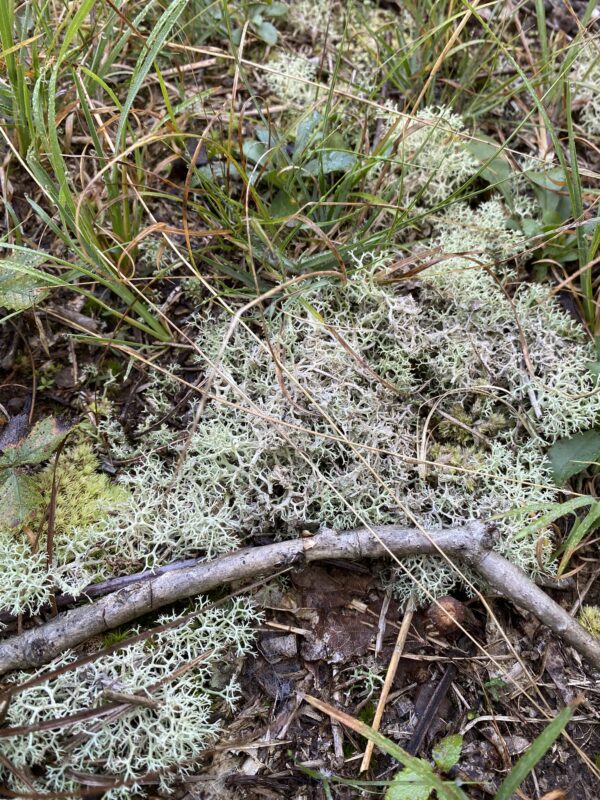Deep Woods, the Appalachian Gametophyte, and Ohio Geobotany
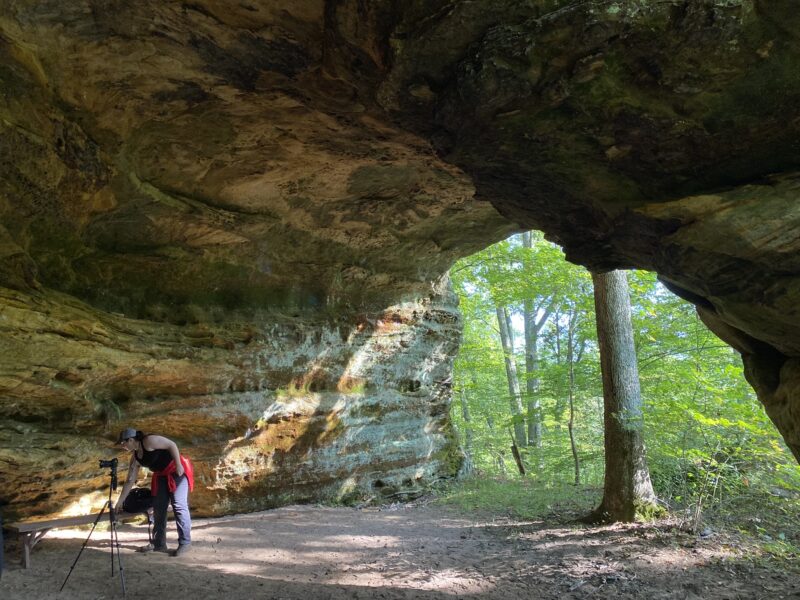
Deep Woods Cave
Substrate-associated Plants
Eastern hemlock (Tsuga canadensis)
The Eastern hemlock is a coniferous tree species native to the eastern United States. It’s had many human uses throughout the centuries. For example, the bark was widely used to tan hides. Additionally, the bark and twig tips can be used to steep a tea that can help soothe a variety of ailments. Today, this species is often planted for shade cover or as an ornamental.

American beech (Fagus grandifolia)
American beech is the only species of the Fagus genus found in North America. It is a slow-growing, deciduous tree that may live for up to 400 years. The wood of American beech is excellent for turning and steam bending, as it wears well and is easily treated with preservatives. The nuts are a distinctive triangular shape and are an important food for wildlife as well as humans.
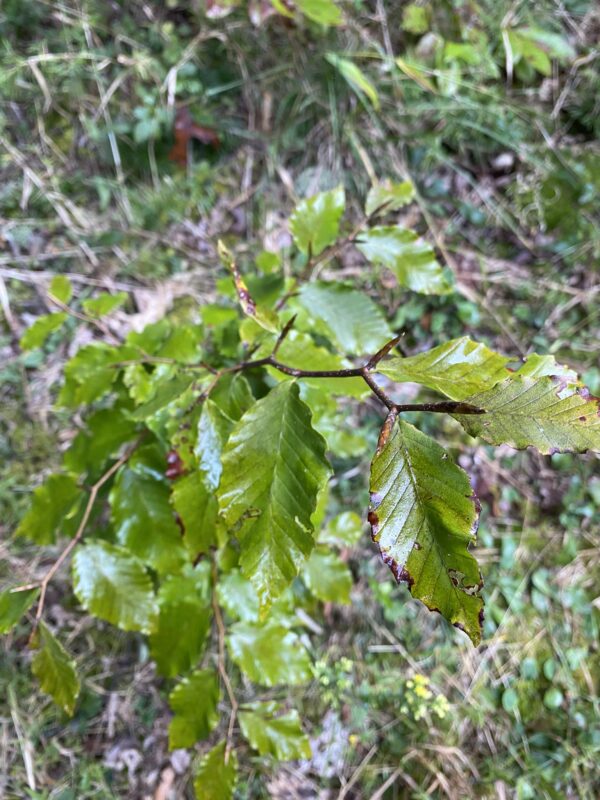
Chestnut oak (Quercus montana)
Chestnut oak is a member of the white oak group and possesses chestnut-like leaves. This species is unique for being able to survive on steep, rocky sites where other oak species cannot. It also has distinctive silvery-white bark. The chestnut oak is often planted for shade in large areas and prefers full sun with well-drained soil. The wood is commonly used for furniture, flooring and cabinetry.
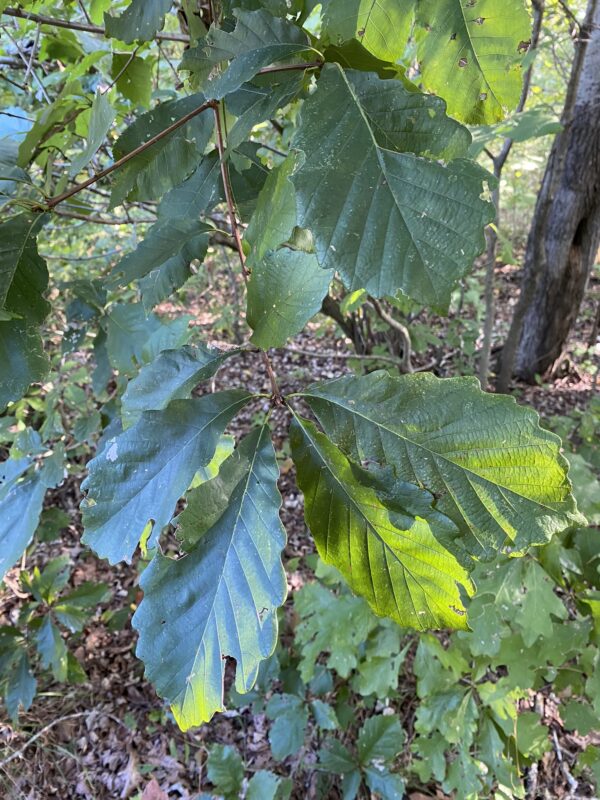
Smooth Alder (Alnus serrulata)
This is a perrenial shrub or small tree that is native to North America. The smooth alder inhabits most, fine sandy loams with peats and mucks. It is a very flood tolerant species and requires high water use. Smooth alders are important for wildlife, especially birds which are very attracted to it. The fruit resembles a small, woody cone and persists through February.
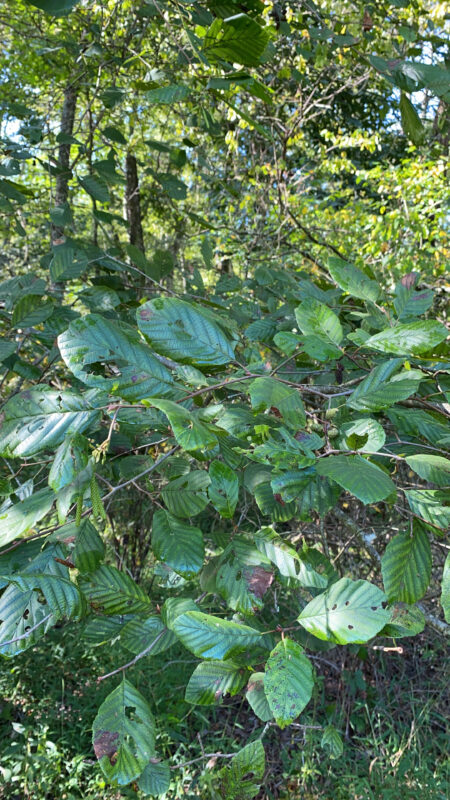
Biotic Threats to Forest Health
Eastern Hemlock (Tsuga canadensis)
Eastern hemlock is a coniferous tree native to North America. In Ohio and other regions, it is being threatened by the hemlock woolly adelgid (HWA), which is a tiny aphid-like insect native to Asia. This bug was first documented in Virginia in 1951. The HWA poses a significant threat to eastern hemlock populations because it feeds at the base of hemlock needles. This depletes the trees’ stored energy, which causes decline and eventually death after several years. The best ways to treat this problem so far are through quarantines to prevent the spread of HWA and the use of chemical and biological controls.

Eastern hemlock (Tsuga canadensis)
Butternut (Juglans cinerea)
This tree species, also known as white walnut, is one of the most hardy nut trees. Unfortunately, this is now a extremely rare find in Ohio. In 1967 butternut canker disease surfaced and has been spreading throughout populations ever since. Some regions have endured over 80% population loss. This disease is caused by a fungus called Ophigonomonia clavigignenti-juglandacearum (Oc-j). It attacks the tree through small cracks and forms cankers, a dead area of tissue under the bark. Once there are multiple cankers that encircle the stem, the tree will die. No one is sure where the fungus comes from. In order to combat this threat, universities are searching for resistant butternuts. The species has also been proposed for listing as threatened or endangered. Additionally, foresters are trying to prevent further spread by limiting international wood trading.
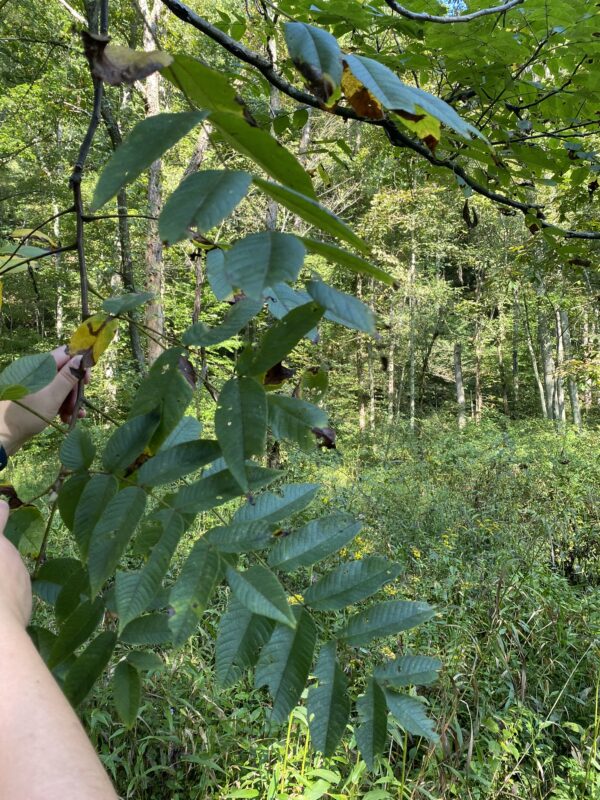
Butternut (Juglans cinerea)
Appalachian Gametophyte
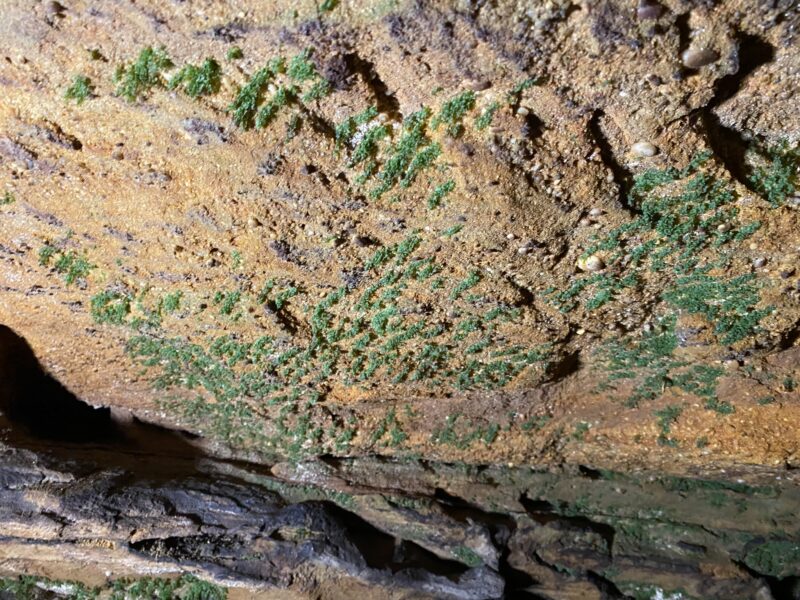
Appalachian gametophyte (Vittaria appalachiana)
The Appalachian gametophyte is a fern species with long-lived gametophytes that is exclusive to the Appalachian Mountains of the United States. It grows on porous rock outcrops, as seen in the above photo. This species has extremely unique characteristics, one of which is the fact that it is one of only three ferns in which mature sporophytes have never been observed. Instead, the Appalachian gametophyte reproduces asexually with gemmae (vegetative propagules consisting of a few cells that are produced along the margins of the gametophyte).
Fern gemmae are much larger than spores, which means they are too large for long-distance wind dispersal. Instead, gemmae are dispersed short distances by wind, water, and animals. Kimmer and Young (1995) found that in bryophytes, gemmae dispersal has even been shown to be facilitated in short distances by slugs!
Despite the fact that a transplant study shows that V. appalachiana can survive north of the last glacial maximum, this species can not be found past this boundary naturally. Additionally, recently disturbed areas and other substrates that are suitable for the Appalachian gametophyte within its range remain uncolonized. This data suggests that the spore dispersal from a fully functioning sporophyte must have created the current-day range of V. appalachiana. The limited range of this species in New York also means that it likely lost its ability to produce mature, functioning sporophytes sometime before the last ice age.
Current populations of the Appalachian gametophyte could not be being sustained by long-distance dispersal from a tropical sporophyte source according to evidence collected by Farrar (1990) concerning allozymes. Furthermore, the limited range in New York corroborates this conclusion. Additionally, genetic analysis of V. appalachiana indicates that dispersal from the tropics occurred only one time. Instead, the wide range of this species is likely due to a a fully-functioning sporophyte of this species that existed and thrived in North America when temperatures were more favorable for tropical growth. During this time, spore dispersal was the sole cause of the current distribution of the Appalachian gametophyte, with the sporophyte becoming extinct during the Pleistocene glaciations.
Personal Assignment: Two Dicots!
Blue Mistflower (Conoclinium coelestinum)
This is a native North American species of herbaceous perennial flowering plant in the sunflower family.
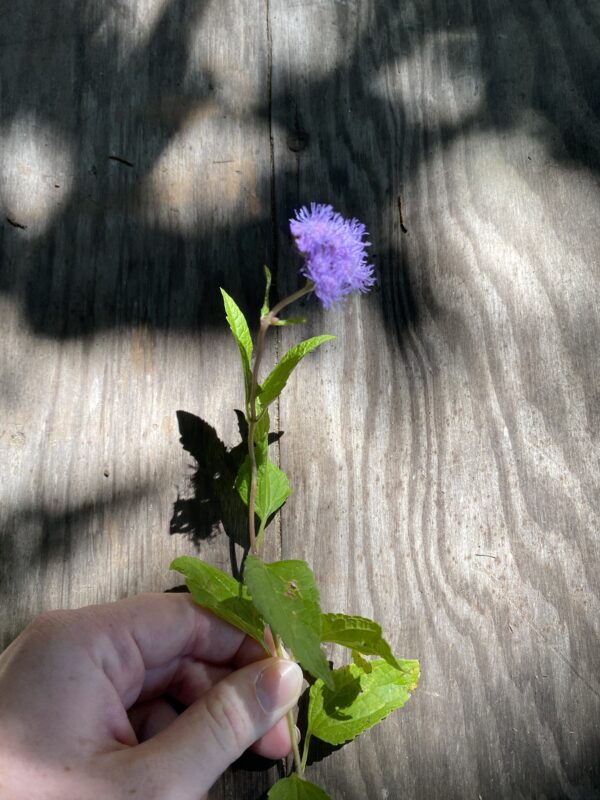
Low Smartweed (Persicaria longiseta)
This plant is a member of the knotweed family that is native to Asia. It was brought to North America and Europe and is often a weed.
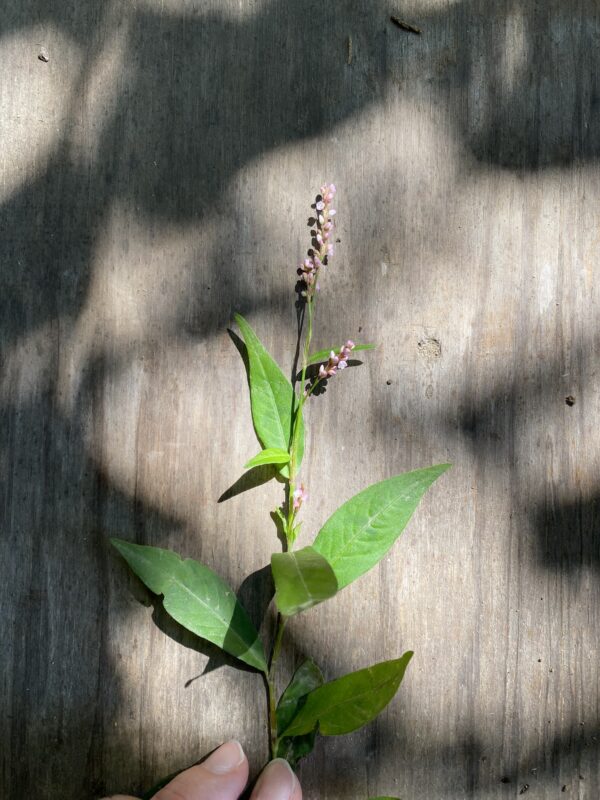
Four More Plants
Swamp goldenrod (Solidago patula)
Swamp goldenrod is native to the Midwestern United States. It typically prefers swamps, sandy swamps, shrubby fens, and interdunal wetlands. It is usually found in higher quality habitats. This species is an important resource for pollinators and other insects. The nectar attracts and feeds numerous bee species, wasps and beetles.
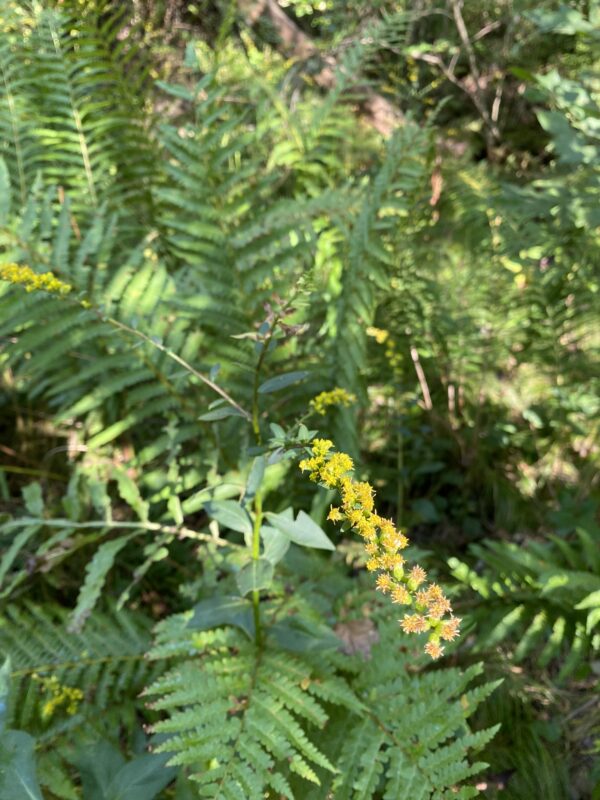
Shining club moss (Huperzia lucidula)
This species of moss grows in loose tufts of 14-20cm long with long, narrow evergreen leaves. The sporangia are nestled in the bases of the upper leaves. Shining club moss has roots that grow from a creeping, underground rhizome. It prefers rich, acid soils in cool, moist forests. The species name “lucidula” comes from Latin and means “shining.” This refers to the plant’s bright, vivid green color.
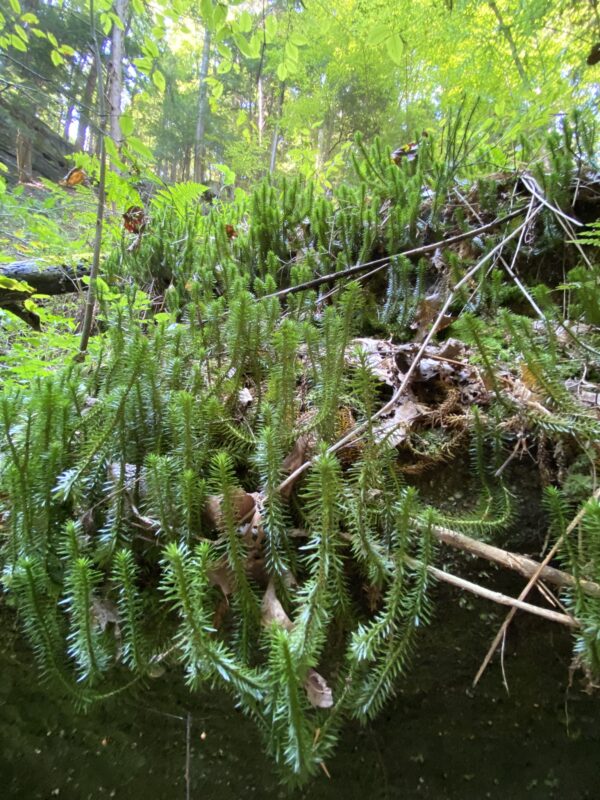
Sensitive fern (Onoclea sensibilis)
This fern is named for its extreme sensitivity to cold weather. When cold weather hits, the sterile fronds brown and wither rapidly. Sensitive ferns have limited use as both food and for wildlife. Some Indigenous American groups are said to have eaten this plant as a vegetable, but sources suggest this should be cautioned because it contains carcinogens. Wild turkeys are found to feed on the fertile fronds of sensitive ferns in the winter when food is scarce.
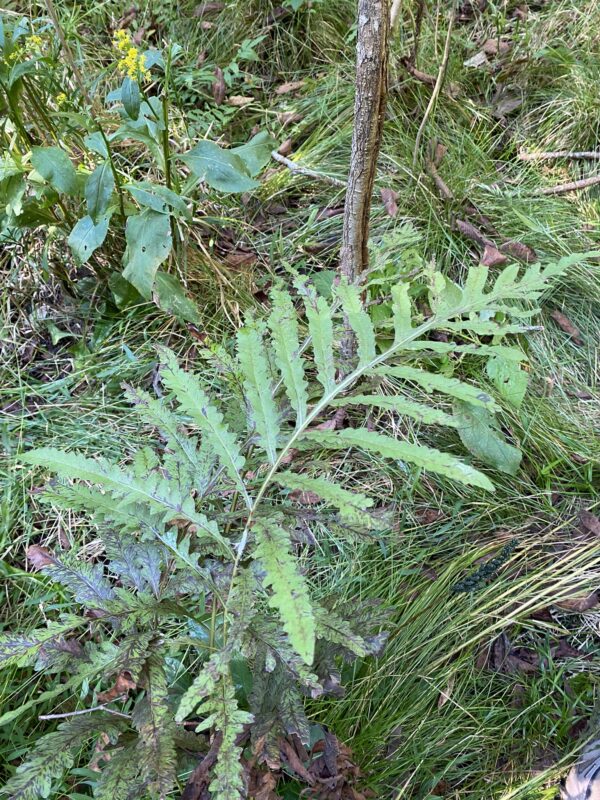
Southern reindeer moss (Cladonia rangiferina)
Despite its name, this species is actually not a moss! Reindeer moss, or reindeer lichen, is a carpet-forming lichen that grows in cool, moisty climates. Lichens are two organisms in one. An individual specimen is about 90% fungus and 10% algae. The fungus provides moisture, minerals and structure, while the algae provides photosynthesis. Although reindeer no longer live in Ohio, during the last ice age they pushed south to eastern Ohio from Canada. This lichen is an important part of reindeer’s diet during winter because of its high carbohydrate and low protein. It can also be eaten by humans as a porridge.
